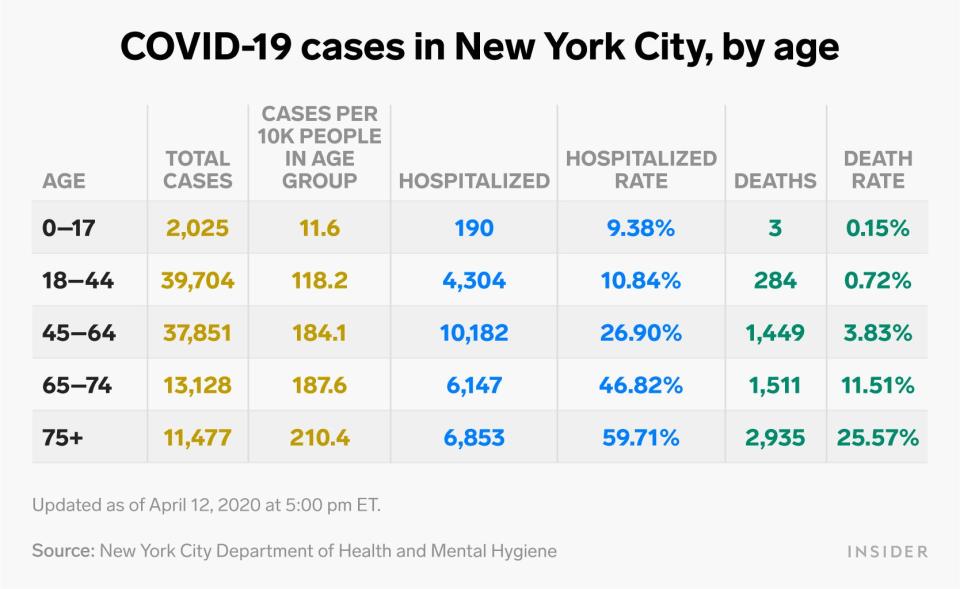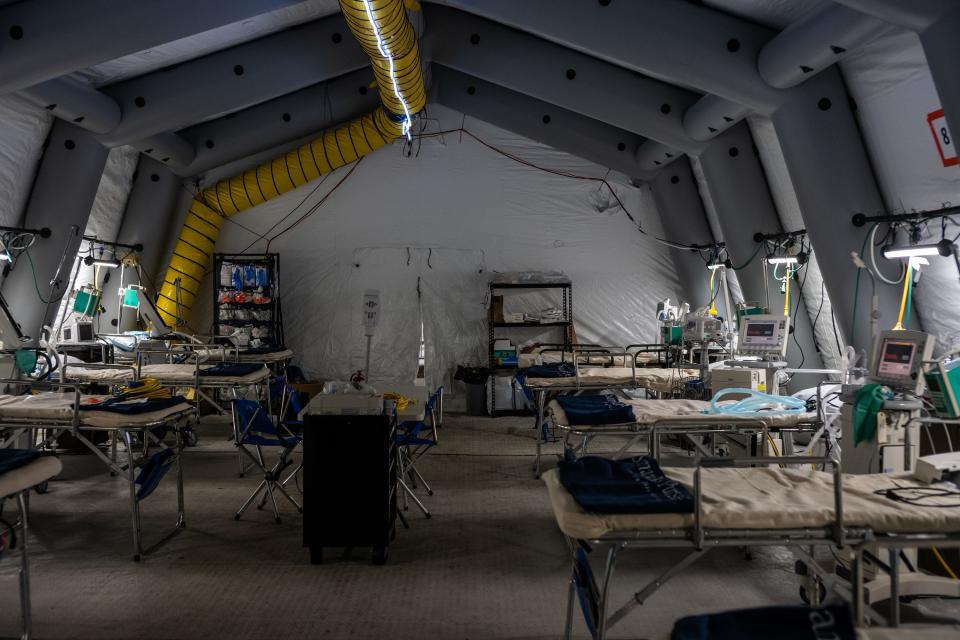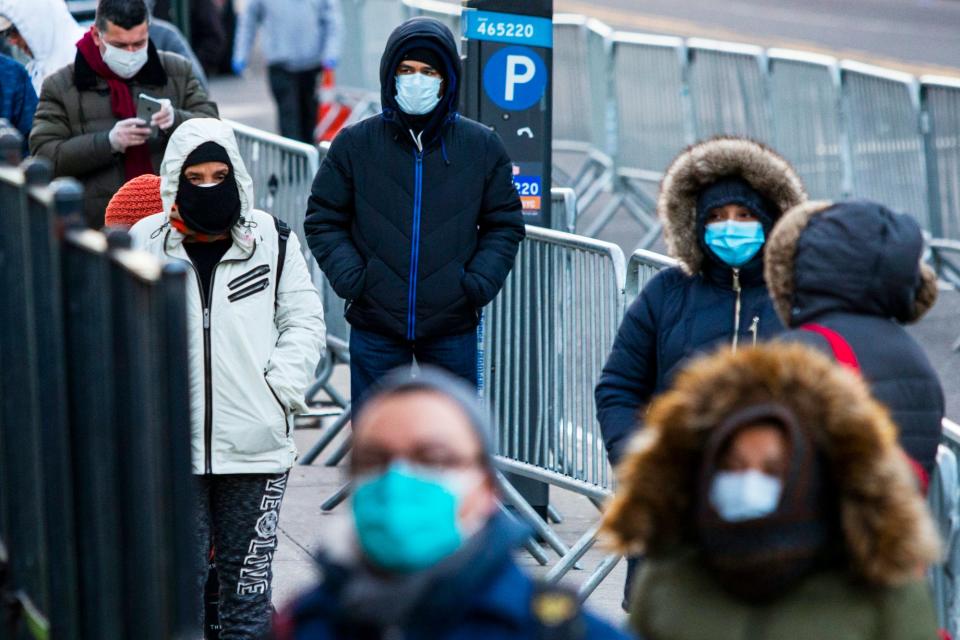Cuomo says 'the worst is over' in New York. But hospitalization rates for New York City's oldest coronavirus patients went up in the last week.

ANGELA WEISS/AFP via Getty Images
New York City is the epicenter of the coronavirus outbreak in the US. But Gov. Cuomo said on Monday that he thinks "the worst is over."
The city has reported more than 104,000 coronavirus cases and 6,100 deaths since its first case was confirmed on March 1.
The number of new confirmed cases in New York City each day remains in the thousands; more than 5,600 new cases were reported on Sunday.
Here's what we know about the ages, locations, and genders of the New Yorkers who have been infected, hospitalized, or died.
On Monday, New York Gov. Andrew Cuomo announced that "the worst is over if we continue to be smart," since the state may have reached the apex of its coronavirus outbreak.
Cuomo said the daily numbers of new people testing positive for COVID-19 and being hospitalized due to the virus are the lowest they've been in three weeks. The state's daily number of new deaths, too, "was basically flat at a horrific level of pain and grief and sorrow," Cuomo said.
"We can start on the path to normalcy," he added.
To date, New York City has reported about 20% of the US's coronavirus cases. More than 104,000 people in the city have been infected (though that's only those who have been tested), and at least 6,180 people have died — accounting for nearly 30% of all US COVID-19 deaths. The city reported its first case on March 1.
New York City's Department of Health and Mental Hygiene releases daily summaries of COVID-19 cases, deaths, and hospitalizations across the city. The reports show how the city's outbreak is progressing and highlight the extent to which elderly New Yorkers are being hospitalized.
Here's the current breakdown:

Skye Gould/Insider
New York City cases, hospitalizations, and deaths by age
New Yorkers older than 75 have the largest number of COVID-19 cases per capita, as well as the highest coronavirus-related hospitalization rate: 60%. That hospitalization rate is nearly 10 percentage points higher than it was at this time last week.
The death rate in that age bracket — which is calculated by dividing the number of fatalities by the number of total cases — is more than 25%, up from 16% last Sunday.
City residents between 65 and 74 years old have the next-highest hospitalization rate: about 47%. That age group's death rate, however, is less than half that of New Yorkers older than 75.
The data also shows that New Yorkers younger than 17 face less risk — about 2,025 cases have been reported in the age group, and only 9% of those cases involved hospitalization. Only three New Yorkers under the age of 17 have died, though 284 people younger than 45 have.

Misha Friedman/Getty Images
The chart does not tell the full story of New York's coronavirus outbreak, however, because very few New Yorkers with milder cases of COVID-19 are getting tested. The Department of Health and Mental Hygiene website urges New Yorkers who think they have mild COVID-19 cases to stay home and not seek care.
"If you think you have COVID-19 and your illness is mild, you do not need to see your health care provider and you will not be tested," the site says. "Getting tested will not change what your provider will tell you to do to get better. They will tell you to stay home so you do not get others sick."
Those who receive coronavirus tests in New York City tend to have the most severe COVID-19 complications.

Eduardo Munoz Alvarez/Getty Images
"Unless you are hospitalized and a diagnosis will impact your care, you will not be tested," the city's health department said.
That means many people's cases (and their demographic information) are not included in the data.
A further breakdown of NYC cases

Kathy Willens/AP
As of Sunday, 54% of New York City's coronavirus cases were in men, according to data from city health officials.
About 31% (32,749 cases) were reported in Queens, making it the hardest-hit borough. Brooklyn's cases make up 26% of the city's total, followed by the Bronx, which has 22%. Manhattan has about 13% of the city's cases, while Staten Island has about 8%.
About 77% of the New Yorkers who have died from COVID-19 so far had confirmed underlying conditions, including diabetes, lung disease, cancer, heart disease, high blood pressure, and asthma.
New York's new cases per day
In the two weeks between March 30 and April 12, the number of cases in New York City jumped from more than 38,000 to nearly 105,000 — about a three-fold increase.
More than 5,600 new cases were reported on Sunday afternoon, marking the sixth day in a row that the number of new daily cases was above 5,000.
New York's lockdown, which went into effect on March 22, will extend through at least April 29. Cuomo signed the executive order on March 20, mandating that all nonessential businesses in the state keep their workers at home and instructing people to stay home and practice social distancing.
Read the original article on Business Insider

